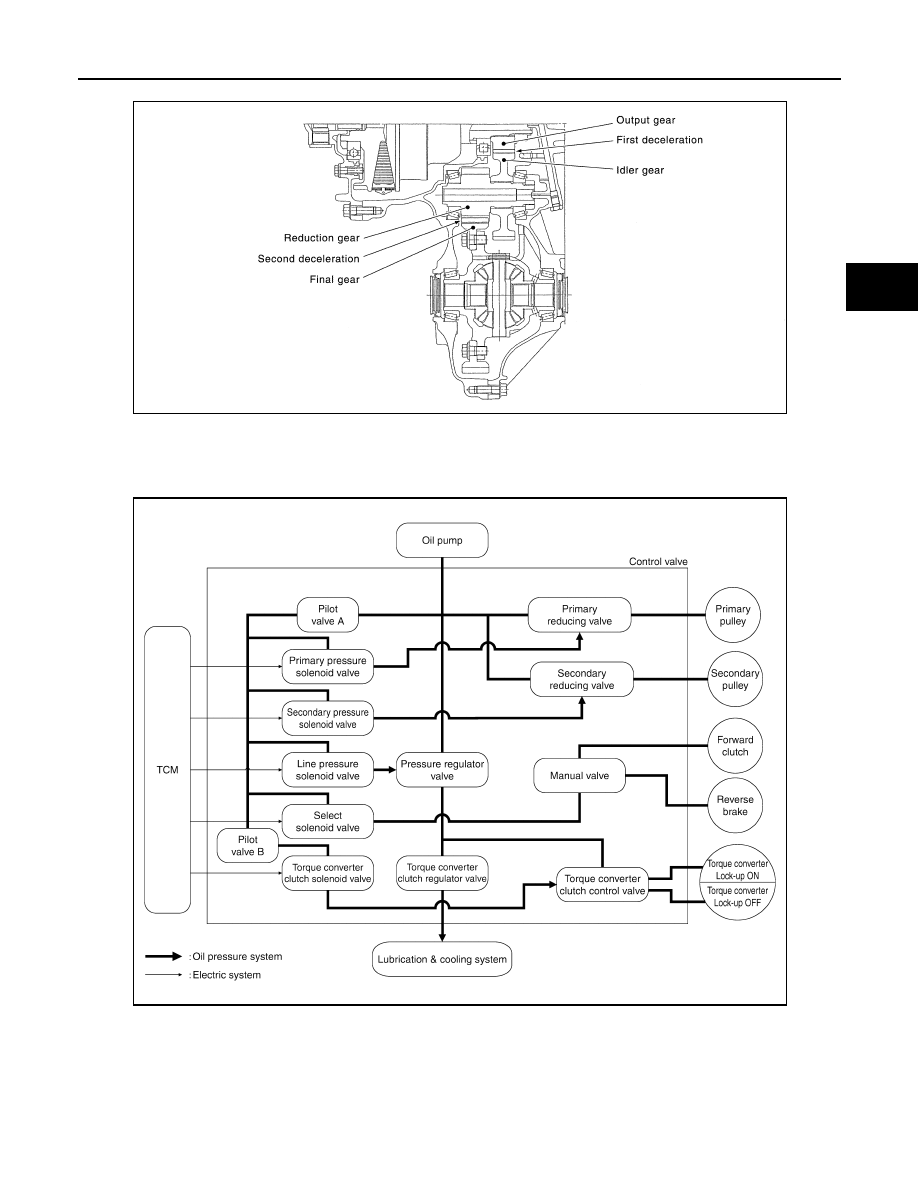Nissan Qashqai J11. Manual - part 664

STRUCTURE AND OPERATION
TM-231
< SYSTEM DESCRIPTION >
[CVT: RE0F10D]
C
E
F
G
H
I
J
K
L
M
A
B
TM
N
O
P
The lubrication oil is the same as the CVT fluid which lubricates the entire transaxle.
TRANSAXLE : Oil Pressure System
INFOID:0000000010589231
Oil pressure required for operation of the transaxle transmission mechanism is generated by oil pump, oil
pressure control valve, solenoid valve, etc.
JSDIA2427GB
JSDIA3786GB